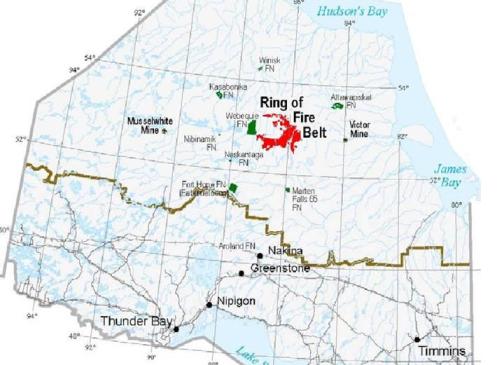This policy document was provided by the Ontario Mining Association (OMA), an organization that was established in 1920 to represent the mining industry of the province.
2011 Ontario Mining Association (OMA) Policy Paper
“China needs to build three cities larger than Sydney (or Toronto)
every year until 2030 to accommodate rural to urban migration.”
(Rio Tinto Presentation)
Ontario has been blessed with an abundance of natural resources, including untold mineral potential. For more than a century, word-class mineral discoveries in this province have brought development and prosperity, along with scientific and technological advances, enabling Ontario’s economy to evolve through innovation. From the earliest times, mining spurred on infrastructure development, enabled more equitable regional development and sustained a variety of support industries. These industries include obvious ones like manufacturing, but also perhaps some unexpected ones like education and financial services.
Today, mining continues to be an economic pillar of Ontario. It is well positioned to grow its contribution to our economy. Though the number fluctuates with various commodity price changes, mining in Ontario had revenues of $6.3 billion in 2009 (down by about 30% due to the global economic downturn). The industry provides a major boost to our financial sector, with the Toronto Stock Exchange (TSX) currently being the leading global mining exchange, listing 57% of the world’s public mining companies and raising more mining equity capital than any other exchange.
























